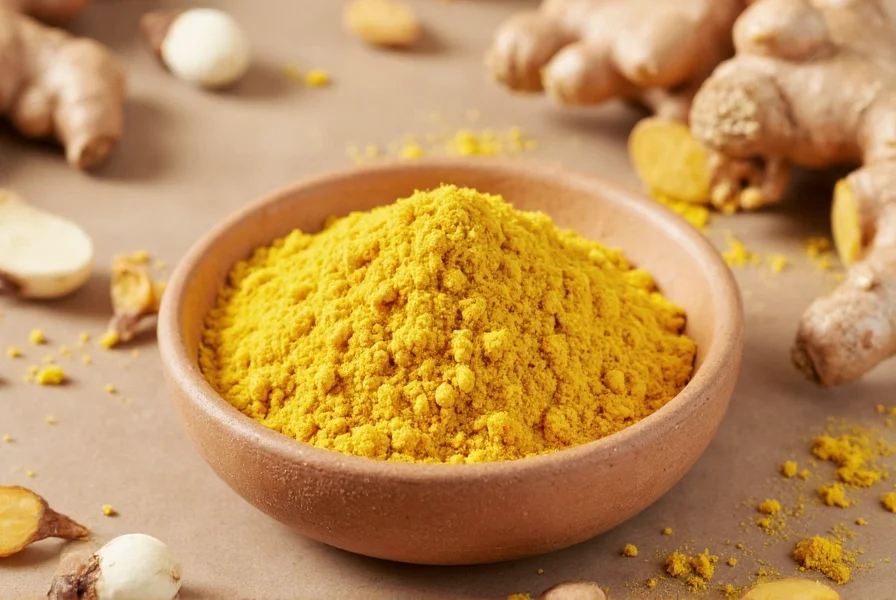Dry ginger powder offers a convenient, long-lasting alternative to fresh ginger with concentrated flavor and bioactive compounds. This versatile spice maintains approximately 90% of fresh ginger's gingerol content when properly processed, though the drying method affects its chemical profile. Understanding the differences between fresh and dried forms helps maximize its culinary and potential wellness applications.
What Exactly Is Dry Ginger Powder?
Dry ginger powder originates from mature ginger rhizomes harvested at peak maturity. Producers wash, peel, and slice the roots before dehydrating them at controlled temperatures between 50-60°C (122-140°F) to preserve bioactive compounds. The drying process converts some gingerol to shogaol, creating a more pungent flavor profile than fresh ginger. Traditional sun-drying methods still exist in some regions, though commercial producers typically use mechanical dehydrators for consistency.

Nutritional Composition Compared to Fresh Ginger
The dehydration process concentrates dry ginger powder's nutritional components while removing approximately 80% of fresh ginger's water content. This concentration affects both flavor intensity and potential health properties.
| Nutrient (per 1 tsp) | Dry Ginger Powder | Fresh Ginger |
|---|---|---|
| Calories | 9 kcal | 2 kcal |
| Gingerol Content | 1.5-2.0% | 0.5-1.0% |
| Shogaol Content | 0.8-1.2% | Trace |
| Fiber | 0.6g | 0.1g |
| Vitamin C | 0.3mg | 0.8mg |
Research published in the Journal of Agricultural and Food Chemistry shows that the drying process increases shogaol concentration while slightly reducing gingerol levels. Shogaol demonstrates higher bioavailability than gingerol, potentially enhancing certain health effects despite the lower overall gingerol percentage.
Evidence-Based Health Considerations
Multiple studies have examined dry ginger powder's potential effects on various health aspects. A systematic review in Nutrients (2022) analyzed 29 clinical trials involving ginger supplementation, noting consistent evidence for nausea relief but more limited evidence for other claimed benefits.
Digestive support: Clinical trials show dry ginger powder may accelerate gastric emptying. A double-blind study with 24 participants found 1.2g daily reduced dyspepsia symptoms by 25% compared to placebo.
Nausea management: The American College of Gastroenterology recognizes ginger as a potential option for pregnancy-related nausea, with most studies using 1-1.5g daily of standardized ginger powder.
Inflammation modulation: While test tube studies show promising anti-inflammatory effects, human trials demonstrate more modest results. A 2021 review in Frontiers in Pharmacology noted that most human studies used doses of 1-3g daily for inflammatory conditions.

Culinary Applications and Usage Guidelines
Dry ginger powder works effectively in both sweet and savory applications where fresh ginger might not be practical. Its concentrated flavor means you need less than fresh ginger in recipes.
When substituting dry ginger powder for fresh in recipes, use this conversion:
- 1 tablespoon fresh grated ginger = 1/4 teaspoon dry ginger powder
- 1 inch fresh ginger piece = 1/8 teaspoon dry ginger powder
Chefs recommend adding dry ginger powder early in cooking processes for savory dishes to allow flavors to meld, while adding it later in baking to preserve more volatile compounds. For beverages like ginger tea, blooming 1/4 teaspoon in hot water for 5 minutes extracts maximum flavor.
Proper Storage Techniques for Maximum Shelf Life
To maintain dry ginger powder's potency and flavor, proper storage is essential. Exposure to light, heat, and moisture rapidly degrades its quality.
Follow these storage guidelines:
- Store in an airtight container away from direct light
- Keep in a cool, dark place (below 20°C/68°F)
- Avoid storing near heat sources like stoves
- Do not refrigerate (moisture causes clumping)
Properly stored dry ginger powder maintains optimal flavor for 2-3 years. Signs of degradation include faded color, diminished aroma, and clumping. While not harmful, degraded powder loses both flavor intensity and potential bioactive compounds.
Creating Dry Ginger Powder at Home
Making your own dry ginger powder ensures freshness and avoids potential additives found in commercial products. The process requires minimal equipment but proper technique affects final quality.
Home preparation steps:
- Select firm, smooth ginger roots with tight skin
- Peel and thinly slice (1-2mm thickness)
- Air-dry for 24 hours or dehydrate at 55°C (131°F) for 8-12 hours
- Grind completely dry slices in a spice grinder
- Sift through a fine mesh strainer
- Store in an airtight container
For optimal results, use a dehydrator rather than oven drying, which often exceeds recommended temperatures. Home-prepared powder typically has higher volatile oil content than commercial products due to shorter processing times.
Safety Considerations and Usage Guidelines
Dry ginger powder is generally recognized as safe when consumed in culinary amounts. However, higher therapeutic doses require consideration of potential interactions.
The European Medicines Agency recommends not exceeding 4g daily of ginger powder. Individuals taking blood thinners, diabetes medications, or certain heart medications should consult healthcare providers before regular high-dose consumption. Pregnant women should limit intake to 1g daily unless directed otherwise by a healthcare provider.
Frequently Asked Questions
What's the difference between dry ginger powder and fresh ginger?
Dry ginger powder contains higher concentrations of shogaol due to the dehydration process, giving it a more pungent, sharper flavor than fresh ginger. It has approximately 4-5 times the potency by volume, with different bioactive compound ratios. Fresh ginger contains more gingerol and zingiberene, while dried ginger develops more shogaol, which has higher bioavailability.
How much dry ginger powder equals fresh ginger in recipes?
Use a 1:4 ratio when substituting dry ginger powder for fresh ginger. Specifically, 1/4 teaspoon of dry ginger powder equals 1 tablespoon of freshly grated ginger. For stronger flavor impact in baked goods, some chefs recommend using 1/3 teaspoon powder per tablespoon of fresh ginger.
Can dry ginger powder help with nausea?
Clinical studies suggest dry ginger powder may help reduce nausea, particularly pregnancy-related nausea and chemotherapy-induced nausea. Most effective doses range from 1-1.5 grams daily, typically divided into multiple doses. A systematic review in Obstetrics & Gynecology found ginger supplementation reduced nausea severity by approximately 20% compared to placebo.
How long does dry ginger powder stay fresh?
Properly stored in an airtight container away from light and heat, dry ginger powder maintains optimal flavor and potency for 2-3 years. After this period, it remains safe to consume but gradually loses volatile compounds that contribute to both flavor and potential health properties. Signs of degradation include faded color, diminished aroma, and clumping.
Is homemade dry ginger powder better than store-bought?
Homemade dry ginger powder often contains higher levels of volatile compounds since it undergoes less processing. Commercial products may include anti-caking agents or be exposed to higher heat during processing. However, store-bought powder offers standardized potency and convenience. For maximum freshness, make small batches of homemade powder and use within 6 months.











 浙公网安备
33010002000092号
浙公网安备
33010002000092号 浙B2-20120091-4
浙B2-20120091-4